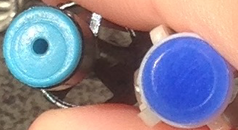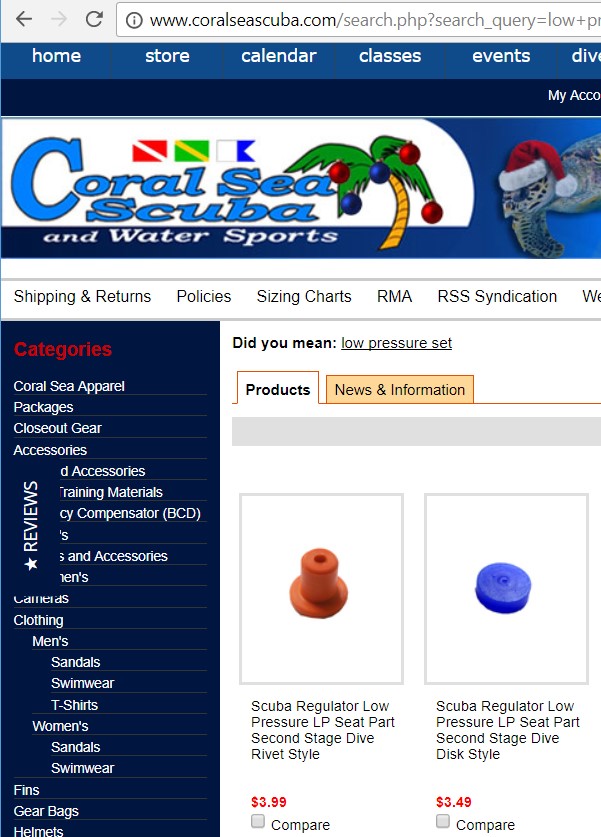MichaelMc
Working toward Cenotes
I got two 109s to overhaul and noticed that, in both, the indentation set that the orifice made in the LP seat is a fair bit off center. Which I assume is normal. Is this an issue if the seat gets rotated, such as after curiosity driven removal and replacement within the poppet,  ? I have replacement seats for the 109s that I plan to use.
? I have replacement seats for the 109s that I plan to use.
The 109 poppet’s rotation is fixed by the lever arm so, as long as you do not remove and replace the seat within the poppet, normally that seat will not rotate much.
I just got a Deep 6 second as well, and its, very nice, poppet seems to create a similar off center indent, but that poppet has no set rotational orientation within the barrel, suggesting it is not an issue? Or that you should not open the Deep 6 barrel unless you plan to replace the seat? Nothing against Deep 6 here.
I'm assuming where the indentation occurred is off center from the poppet axis and not the seat and its center being off center from the poppet axis. But that the orifice edge is on center with the barrel axis, being machined metal. And that the poppet winds up a bit canted in the barrel due to the diaphragm lever pressing on it a bit off center?? Or more simply, why are these indents off center? Maybe as they are LP seats, if the edge crosses an earlier valley in the seat, it still seals fine.

The 109 poppet’s rotation is fixed by the lever arm so, as long as you do not remove and replace the seat within the poppet, normally that seat will not rotate much.
I just got a Deep 6 second as well, and its, very nice, poppet seems to create a similar off center indent, but that poppet has no set rotational orientation within the barrel, suggesting it is not an issue? Or that you should not open the Deep 6 barrel unless you plan to replace the seat? Nothing against Deep 6 here.
I'm assuming where the indentation occurred is off center from the poppet axis and not the seat and its center being off center from the poppet axis. But that the orifice edge is on center with the barrel axis, being machined metal. And that the poppet winds up a bit canted in the barrel due to the diaphragm lever pressing on it a bit off center?? Or more simply, why are these indents off center? Maybe as they are LP seats, if the edge crosses an earlier valley in the seat, it still seals fine.

Last edited:




